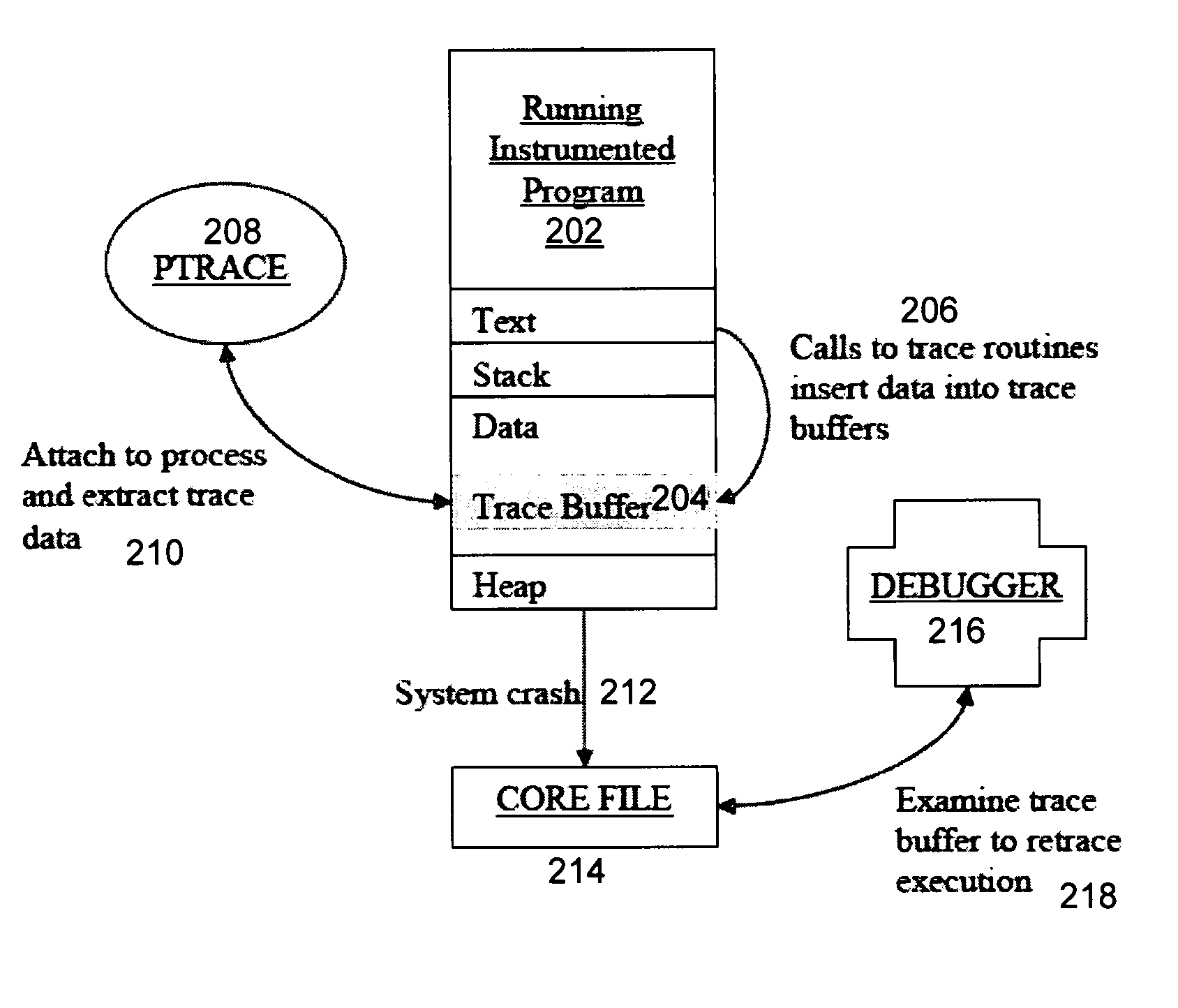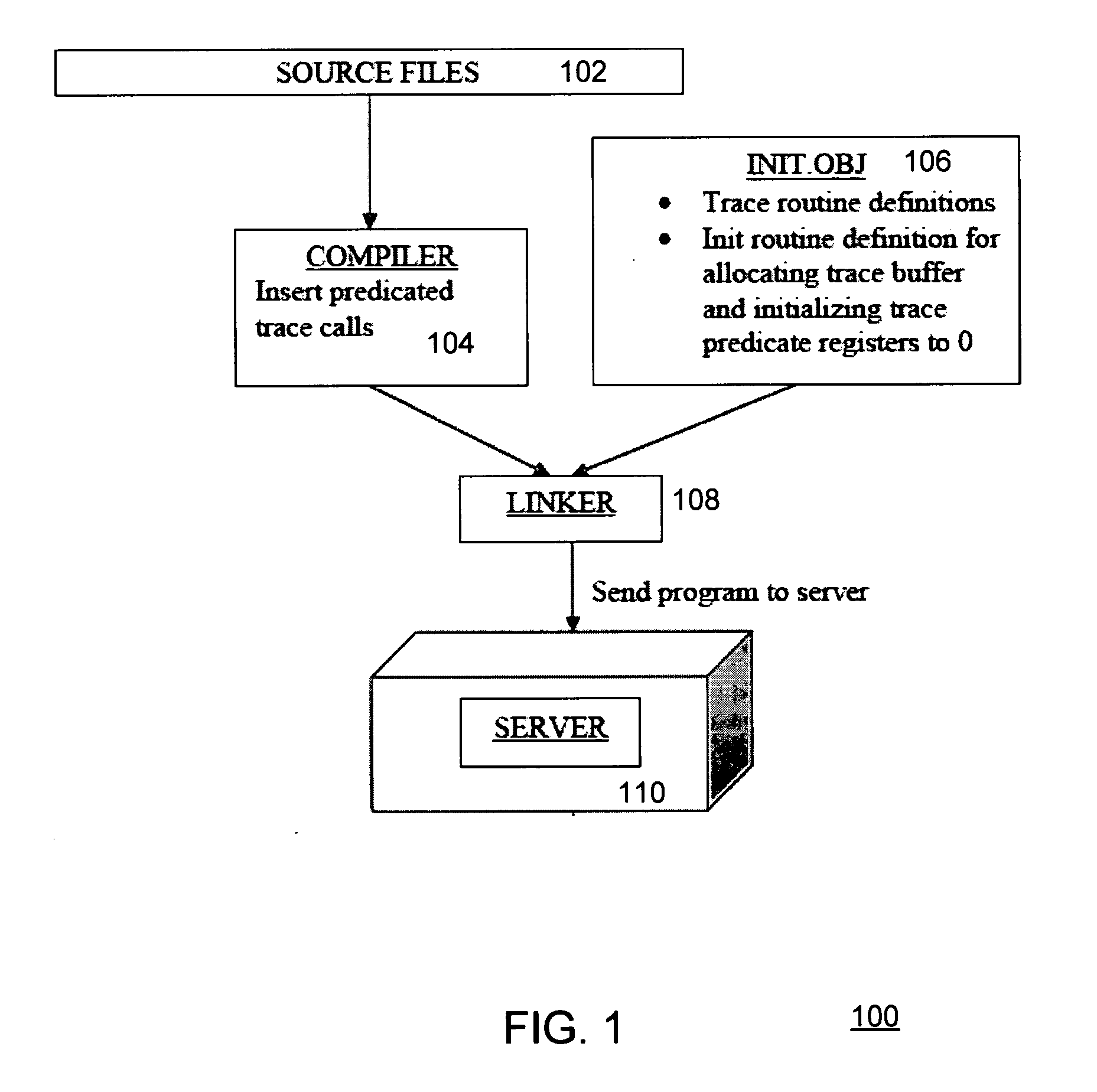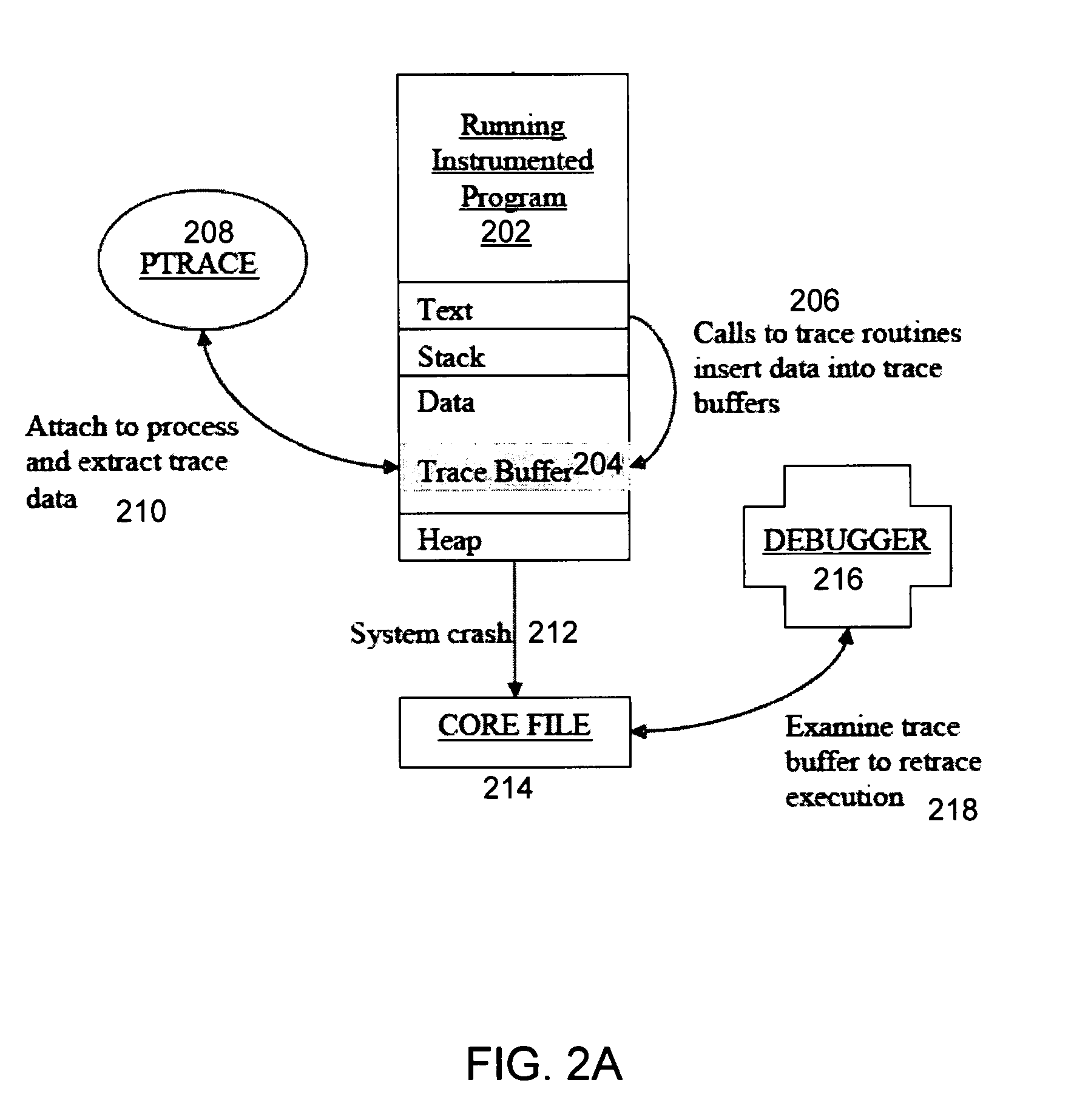Compiler-inserted predicated tracing
- Summary
- Abstract
- Description
- Claims
- Application Information
AI Technical Summary
Problems solved by technology
Method used
Image
Examples
Embodiment Construction
[0026]The present application discloses methods and apparatus which address the above-discussed obstacles and problems to having deployed software provide trace data in an effective and efficient manner. The disclosed methods and apparatus greatly facilitate tracing deployed system software for the purposes of low-level debugging and / or system monitoring.
[0027]In accordance with an embodiment of the invention, a software instrumentation solution is disclosed. The solution is generally referred to herein as “predicated tracing.” In predicated tracing, the compiler is used to automatically insert predicated calls to trace routines into software targeted for deployment.
[0028]A hardware register stores data which may be readily accessed by a central processing unit (CPU) of a computer as it executes instructions. A hardware predicate register stores data for use in controlling the execution of predicated instructions. For example, a one-bit predicate register may control conditional exe...
PUM
 Login to View More
Login to View More Abstract
Description
Claims
Application Information
 Login to View More
Login to View More - R&D
- Intellectual Property
- Life Sciences
- Materials
- Tech Scout
- Unparalleled Data Quality
- Higher Quality Content
- 60% Fewer Hallucinations
Browse by: Latest US Patents, China's latest patents, Technical Efficacy Thesaurus, Application Domain, Technology Topic, Popular Technical Reports.
© 2025 PatSnap. All rights reserved.Legal|Privacy policy|Modern Slavery Act Transparency Statement|Sitemap|About US| Contact US: help@patsnap.com



